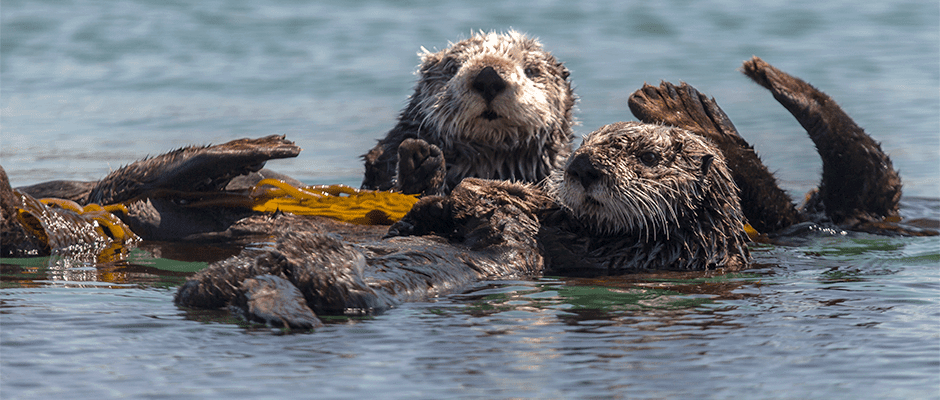Share this article
Sea otters use whiskers and paws to find their prey
Sea otters (Enhydra lutris) are not like other marine mammals. Although, their whiskers are robust and thick like their seal and sea lion counterparts, they never traded their front paws for flippers. Researchers recently tested how sea otters distinguish objects with the sense of touch.
“When you watch sea otters in the wild or captivity, they investigate their environment using their paws and whiskers,” said Sarah McKay Strobel, a PhD candidate at the University of California Santa Cruz and lead author of the study published in the Journal of Experimental Biology.
Strobel said they also thought touch would be an important sense for the species since vision and smell seemed less reliable under water. The otters often forage at night when light is limited, and otters can’t sniff under water since they are holding their breath. And, she said, the otters have to be efficient since they lose heat quickly in the water and have to compensate by eating a lot. “Digesting creates heat that can then be used to maintain temperature,” she said.
To test how sea otters use their paws and whiskers, Strobel and her colleagues teamed up with a sea otter known as Selka with an interesting backstory. Selka was originally found in the wild without a mother and was rescued by the Monterey Bay Aquarium Sea Otter Program. She was rehabilitated and raised by a captive surrogate sea otter mother before being released back into the wild. But after her release, she dealt with toxic poisoning from shellfish and a shark bite. Ultimately, she became too comfortable around people. Deemed “nonreleasable,” she was placed in captive care by the U.S. Fish and Wildlife Service.
Strobel and her colleagues set up an experiment that was much like a vision or hearing test at a doctor’s office, she said. They presented Selka with two textured plates, each similar to the pattern on corduroy pants, and asked her to choose one. Selka quickly learned that choosing one texture earned her food, but choosing the other texture did not earn her food. As the experiment continued, the rewarded texture remained the same, but Strobel changed the unrewarded texture, making it more and more similar to the rewarded texture. When Selka began guessing, Strobel knew that she could no longer discern that the textures were different and used this to estimate Selka’s touch sensitivity.
The team tested Selka on the same task with her paws and whiskers and found that although her paws were more sensitive than her whiskers, both her paws and whiskers were comparable to primates, seals, and elephants studied in similar experiments.
The team also studied how humans responded in the same experimental set-up using their fingertips. They found that while Selka’s sensitivity when using her paws was comparable to humans using their fingertips, Selka was much quicker at distinguishing the textures. The sea otter made decisions with her paws in under 200 milliseconds and with her whiskers in under 400 milliseconds, while humans consistently took over a second.
“It makes sense because sea otters have to be really efficient at finding food and making decisions in the wild,” Strobel said.
Strobel said knowing about sea otter behavior and sensory ability can be important for conservation. “Typically, behavior and sensory ability do not get connected directly to conservation, but I think they really should,” she said. “It’s clear why we need to know about population numbers and individual movements, but behavior is a big component of how animals can or cannot adapt to changing environments.”
For example, Strobel said it’s important to know about behavior as sea otter populations expand to other areas in California, British Columbia, Washington and Oregon. This knowledge can also be important for rehabilitation programs, she said. “Rehabilitated sea otters have to be able to find food and communicate in all the same ways that a wild-raised sea otter would,” she said. “If we know how sea otters make decisions and use their senses to find food, we can contribute to best practices for developing appropriate behavior in rehabilitation programs directly involved with bolstering wild populations.”
Header Image: Sea otters use their paws and whiskers to distinguish patterns on objects. ©Mike Baird








